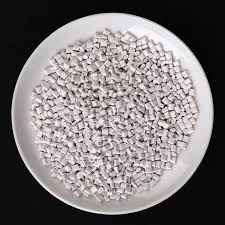Chemical Softening of Water An Essential Process for Water Quality Improvement
Water is one of the most vital resources on our planet, essential for life, agriculture, industry, and many aspects of daily living. However, hard water—a term used to describe water with high mineral content, specifically calcium and magnesium ions—can pose significant challenges. Hard water can lead to scaling in pipes, reduced efficiency of water heaters, and less effective soap and detergent use. As a result, chemical softening of water has become a necessary process to improve water quality and enhance its usability for various applications.
Chemical softening is a process that involves the removal of calcium, magnesium, and other metal cations from hard water through various methods. The primary goal is to reduce the hardness of water, making it more suitable for household use, industrial processes, and agricultural applications. This is typically achieved using chemical agents such as lime (calcium hydroxide) and soda ash (sodium carbonate), which react with the hardness-causing minerals in the water.
One common approach for chemical softening is the lime-soda process. In this method, lime is added to the hard water, where it reacts with the dissolved calcium and magnesium ions, forming insoluble precipitates. These precipitates can then be removed through sedimentation or filtration. Following this step, soda ash is introduced to the water to further reduce magnesium levels and stabilize the resulting solution. The overall reaction effectively decreases the water's hardness, resulting in softer water that is less likely to form scale in pipes and appliances.
Another chemical softening method is the ion exchange process, which utilizes resins that exchange sodium ions for calcium and magnesium ions present in hard water. In this process, the hard water passes through a resin bed, where the sodium ions on the resin beads are replaced with hardness ions in the water. This method is particularly popular for residential water softening systems, where small to medium-scale softening is required. The regeneration of ion-exchange resins is necessary periodically to maintain their effectiveness, typically accomplished by flushing the resin with a concentrated salt solution.
chemical softening of water

Chemical softening of water offers numerous benefits. For households, soft water can lead to reduced detergent usage and improved lathering, which not only saves money but also ensures more effective cleaning. It enhances the lifespan of plumbing systems and appliances by minimizing scale build-up, which is often a hidden cost that homeowners overlook. In industrial settings, soft water can improve efficiency in processes such as heating, cooling, and manufacturing, leading to reduced energy costs and extended equipment lifespan.
In agriculture, soft water can play a crucial role in irrigation systems. The presence of calcium and magnesium in hard water can affect the soil and plant health. By using chemically softened water, farmers can promote better nutrient uptake and improve crop yield.
Despite its many advantages, chemical softening of water is not without its challenges. The introduction of chemicals like lime and soda ash can result in increased pH levels, which may require further adjustment. Additionally, the processes can produce waste products that need to be managed effectively to minimize environmental impact.
In conclusion, the chemical softening of water is a vital process that addresses the challenges posed by hard water. With methods such as the lime-soda process and ion exchange, hard water can be transformed into a valuable resource that meets the needs of households, industries, and agriculture. As we continue to confront water quality issues globally, developing efficient and sustainable chemical softening methods will remain crucial for ensuring a safe and reliable water supply.

